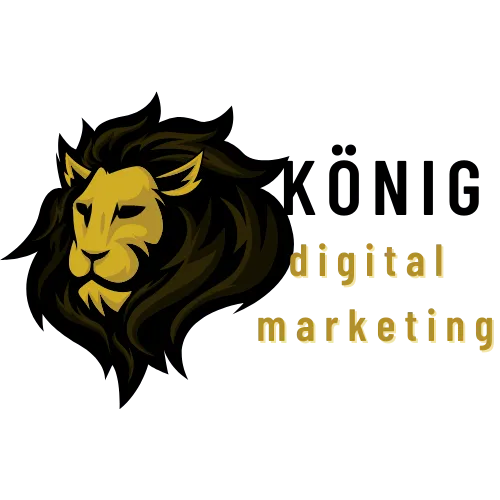

AI Marketing Automation & Lead Generation Solutions For B2B Scaling Founders
The only 3 things you need to rank #1 on Google. Get more patients and sales with our proven digital marketing services. Local SEO that gets results in 30 days or less!
AI Marketing Software & Lead Generation Solutions For Small Businesses
The only 3 things you need to rank #1 on Google. Get more customers and sales with our proven digital marketing services. Local SEO that gets results in 30 days or less!
Does Your Business Qualify For Fast Revenue Windfalls With A Database Re-Activation?
Multi-Channel Marketing Domination...
Marketing Automation
AI Powered Lead Generation
Multi-Channel Marketing Domination...

Transform your practice, amplify your patient base, and become the go-to dental supplier in your area. This isn't just an upgrade; it's a business-defining evolution.
Take charge of your growth today, dominate your market tomorrow. Ready to elevate your business? Let's connect!
The Ultimate AI Dental Manufacturer Growth Solution
Revolutionize your dental sales with our cutting-edge AI Dental Data Boost!
Crafted exclusively for ambitious dental suppliers, this game-changing solution doesn’t just fill your schedule—it transforms your practice into a thriving hub of new patients.
Here's what you'll get every month:
10,000 Targeted Data points: Dive into a vast pool of 10,000 meticulously enriched leads, each segmented by zip code, age, income, and mobile number. These aren't just names; they're detailed profiles tailored to match your ideal patient demographics.
Seamless CRM Integration: Say goodbye to manual data entry. Our advanced CRM system seamlessly integrates with your workflow, automatically loading leads and equipped with AI-powered nurture emails and appointment booking. Your schedule will be filled with qualified leads without lifting a finger.
Effortless Appointment Scheduling: Our AI doesn’t just schedule appointments; it optimizes your calendar based on conversion rates, ensuring your team's time is used efficiently, and every slot is maximized for potential patients.
Professional Call Center Support: To ensure no opportunity is missed, our dedicated call center professionals step in to seal the deal. They enhance lead engagement and ensure that your calendar is booked solid with quality appointments.
The Result? A constant stream of high-quality appointments flooding your calendar, ready to become long-term clients. You're not just growing your business; you're revolutionizing client acquisition.
The Ultimate AI Recruitment Accelerator
Unlock the full potential of your recruitment efforts with our exclusive AI Recruitment Accelerator package!
Designed specifically for forward-thinking recruitment firms, this powerhouse solution promises not just to fill your pipeline but to transform it into a dynamic engine of growth.
Here’s what you get every single month:
10,000 Precision-Targeted Data Points: Not just any leads, but 10,000 enriched contacts meticulously curated to connect you with key industry decision-makers. This isn't about quantity alone; it's about premium quality that converts.
Fully Integrated CRM System: We don't just hand over leads; we streamline them directly into a state-of-the-art CRM system. This system isn’t just a database—it’s your automated sales force, equipped with advanced nurture emails and AI-driven appointment scheduling, working tirelessly to warm up your prospects.
Automatic Appointment Setting: Forget the hassle of back-and-forth scheduling. Our AI tools analyze responses and optimize appointment times to fill your calendar efficiently. Each slot is meticulously planned to maximize your team’s productivity and focus on closing deals.
Dedicated Call Center Support: To ensure no opportunity slips through, our professional call center steps in to seal the deal. They’re your closing cavalry, enhancing lead engagement and ensuring your calendar transitions from busy to booming.

Make the switch to smarter recruiting. Transform your approach, multiply your outcomes, and dominate your sector. This isn’t just an upgrade. It’s a revolution.
Act now, dominate tomorrow. Ready to boost your recruitment game? Let’s talk!
The Ultimate AI Insurance Data Machine

Supercharge your insurance sales with our unparalleled AI Insurance Data Machine! Crafted for ambitious insurance agencies aiming to eclipse their competition, this all-in-one solution not just fills your sales funnel—it transforms it into a high-performance conversion machine.
Here's what your agency gains every month::
10,000 High-Quality Data Points: Dive into a pool of 2,000 meticulously enriched leads, each segmented by zip code, age, and income. These aren't random contacts; they're tailored picks designed to match your ideal customer profile, dramatically increasing the chances of conversion.
Fully Automated CRM Integration: Say goodbye to manual data entry. Our sophisticated CRM system automatically absorbs every lead, armed with advanced nurturing emails and an AI-driven appointment setting feature that works round-the-clock to warm up your prospects.
Effortless Appointment Booking: Our AI doesn't just schedule appointments; it optimizes your calendar based on peak conversion times, ensuring that your team's efforts are maximized and no opportunity is missed.
Professional Call Center Backup: To guarantee that every lead is capitalized on, our dedicated call center professionals provide the extra push needed. They enhance engagement and ensure that your calendar transitions from filled to fruitful.
The Outcome? A relentless stream of high-potential appointments flooding your calendar, ready for conversion. You’re not just playing the game; you're outsmarting the field. Transform your sales process, amplify your results, and become a leader in your market. This isn't just an advancement—it’s a complete overhaul of how you engage with potential clients.
Take action today, dominate your market tomorrow. Are you ready to elevate your insurance sales? Let's connect!
The Ultimate AI Recruitment Accelerator

Unlock the full potential of your recruitment efforts with our exclusive AI Recruitment Accelerator package!
Designed specifically for forward-thinking recruitment firms, this powerhouse solution promises not just to fill your pipeline but to transform it into a dynamic engine of growth.
Here’s what you get every single month:
10,000 Precision-Targeted Data Points: Not just any leads, but 1,000 enriched contacts meticulously curated to connect you with key industry decision-makers. This isn't about quantity alone; it's about premium quality that converts.
Fully Integrated CRM System: We don't just hand over leads; we streamline them directly into a state-of-the-art CRM system. This system isn’t just a database—it’s your automated sales force, equipped with advanced nurture emails and AI-driven appointment scheduling, working tirelessly to warm up your prospects.
Automatic Appointment Setting: Forget the hassle of back-and-forth scheduling. Our AI tools analyze responses and optimize appointment times to fill your calendar efficiently. Each slot is meticulously planned to maximize your team’s productivity and focus on closing deals.
Dedicated Call Center Support: To ensure no opportunity slips through, our professional call center steps in to seal the deal. They’re your closing cavalry, enhancing lead engagement and ensuring your calendar transitions from busy to booming.
Make the switch to smarter recruiting. Transform your approach, multiply your outcomes, and dominate your sector. This isn’t just an upgrade. It’s a revolution.
Act now, dominate tomorrow. Ready to boost your recruitment game? Let’s talk!
The Ultimate AI Dental Practice Growth Solution

Transform your practice, amplify your patient base, and become the go-to dental practice in your area. This isn't just an upgrade; it's a practice-defining evolution.
Revolutionize your dental practice with our cutting-edge AI Dental Data Boost!
Crafted exclusively for ambitious dental practices, this game-changing solution doesn’t just fill your schedule—it transforms your practice into a thriving hub of new patients.
Here's what you'll get every month:
10,000 Targeted Data points: Dive into a vast pool of 10,000 meticulously enriched leads, each segmented by zip code, age, income, and mobile number. These aren't just names; they're detailed profiles tailored to match your ideal patient demographics.
Seamless CRM Integration: Say goodbye to manual data entry. Our advanced CRM system seamlessly integrates with your workflow, automatically loading leads and equipped with AI-powered nurture emails and appointment booking. Your schedule will be filled with qualified leads without lifting a finger.
Effortless Appointment Scheduling: Our AI doesn’t just schedule appointments; it optimizes your calendar based on conversion rates, ensuring your team's time is used efficiently, and every slot is maximized for potential patients.
Professional Call Center Support: To ensure no opportunity is missed, our dedicated call center professionals step in to seal the deal. They enhance lead engagement and ensure that your calendar is booked solid with quality appointments.
The Result? A constant stream of high-quality appointments flooding your calendar, ready to become long-term patients. You're not just growing your practice; you're revolutionizing patient acquisition.
Take charge of your growth today, dominate your market tomorrow. Ready to elevate your practice? Let's connect!
Transform Your Business with Smart Marketing Automation Software...
Local SEO Services

Local SEO
Local SEO is different from national SEO because it focuses on your community, in your business catchment where more than 85% of your customers come from and will come from, the very nature of local business marketing is competitive because you and all your competitors are wanting a slice of the same pie, local SEO is how you win…

Google My Business
Google My Business is the most powerful local SEO tool. It’s free, and it’s easy to use. If you have a business with a physical location, this is your chance to get more customers in the door, however, it is competitive and GMB SEO is needed to get in the 3-pack and stay there and that is where we come in, show up in near me search and do business…

Google Local Services Ads
Are you a local business owner looking to dominate your local community with your services? Look no further than Google Local Services Ads! By using Google Local Services Ads, you can reach potential customers in your area who are actively searching for the services you offer. These ads appear at the top of Google search results, making them highly visible and effective.

3 Click Facebook Ads
New marketing automation software that helps businesses create Facebook ad campaigns with ease. With UpHex, creating ad campaigns has been simplified into a three-step process that anyone can complete. The platform allows users to create high-converting Facebook ads quickly and easily, using templates and automation tools.
Hear From Our Customers...
Alexis Williams
Dr CL Steyn - Orthopedic Surgeon
Elana Swart-Traut - Director Riverside College
Brandon Boyd
Pamela Runge - P2P Dental Connect
Riaan Willemse - Chris Willemse Painters
Terrys Tarot Readings
FAQ's
What is SEO?
SEO, or Search Engine Optimization, refers to the process of optimizing a website to improve its visibility in search engine results pages (SERPs). The goal is to increase organic (non-paid) traffic by enhancing the site's relevance and authority for specific keywords or phrases related to the content or services offered.

Why is SEO important?
SEO is crucial because it makes your website more visible to potential customers, leading to more traffic and opportunities to convert prospects into customers. It's a fundamental part of digital marketing because people conduct trillions of searches every year, often with commercial intent.

How does Google rank websites?
Google uses a complex algorithm that takes into account over 200 factors to rank websites. These factors include user experience, site speed, content quality, keyword relevance, mobile-friendliness, and inbound links, among others. The exact algorithm is a closely guarded secret and is constantly evolving.

What are keywords, and why are they important?
Keywords are words or phrases that users enter into search engines to find information. They are important because optimizing your website with relevant keywords helps search engines understand what your site is about, allowing it to show your site to the right audience.

What's the difference between on-page and off-page SEO?
On-page SEO refers to optimizations you can apply on your website, such as content quality and keyword optimization, meta tags, and site architecture. Off-page SEO involves external factors that influence your site's ranking but aren't directly on your site, like backlinks, social media presence, and other promotional activities outside your website.

How long does it take to see results from SEO?
The timeframe to see results from SEO can vary greatly depending on numerous factors, such as the website's current state, competition in your industry, and the strategies implemented. Generally, noticeable improvements can be seen within 3 to 6 months, but SEO is an ongoing process that requires continuous effort for sustained success.

Are backlinks still important for SEO?
Yes, backlinks are still a critical factor in SEO. They act as a vote of confidence from one site to another, signaling to search engines that others vouch for your content. However, quality over quantity is crucial; a few high-quality backlinks from reputable sites are far more valuable than many low-quality links.

Can I do SEO on my own?
Yes, it's possible to do SEO on your own, especially with the wealth of resources and tools available online. However, SEO can be complex and time-consuming. Depending on your skill level and the competitiveness of your industry, you might benefit from hiring a professional or agency to manage your SEO efforts.

How do I choose the right keywords?
Choosing the right keywords involves researching to understand what terms your target audience is using to find products or services like yours. Tools like Google Keyword Planner and SEMrush can help identify relevant keywords, their search volume, and competition level. Focus on a mix of broad and long-tail keywords that accurately represent your content.

How has SEO changed over the years?
SEO has evolved significantly from simply stuffing pages with keywords to a more sophisticated approach that prioritizes user experience, content quality, and relevance. Search engines have become better at understanding user intent, promoting websites that provide value to users. As a result, modern SEO strategies focus more on creating high-quality content, optimizing for mobile users, and ensuring fast page loading times.

Why do you call your SEO service "Trust Based Ranking"?
"Trust Based Ranking" simply refers to doing SEO the right way or "white hat" as some might refer to it, we've been doing SEO and ranking since 2008 and through the years we've seen instant "black hat" methods crash and burn and Google rewarding and ranking websites sticking to the guidelines and delivering valuable content and service to their community, simply put it pays to gain Google's trust because your business will benefit from profitable search rankings.

From Our Blog

B2B Prospecting Challenges: Manufacturing Sales Leaders Reveal Strategies
According to recent industry research, the average B2B sales representative spends nearly 21 hours every week on prospecting activities, yet only 24% of those efforts result in meaningful conversations.
In manufacturing specifically, sales teams waste approximately 33% of their prospecting time pursuing leads that will never convert.

This inefficiency costs mid-sized manufacturing companies an estimated $300,000-$500,000 annually in misallocated resources and lost opportunity costs.
For the past decade, I've worked closely with manufacturing sales teams across North America, helping them transform their prospecting approaches to meet the demands of an increasingly complex B2B buying landscape.
What's become abundantly clear is that yesterday's prospecting techniques simply don't deliver in today's environment.
In this exclusive deep dive, I'm sharing the unfiltered insights from interviews with successful sales leaders at manufacturing companies in the $5-20 million revenue range.
These aren't theoretical concepts from consultants who haven't closed a deal in years—these are battle-tested strategies from leaders who are solving real prospecting challenges right now.
Common Prospecting Challenges
Across all conversations with manufacturing sales leaders, several critical pain points emerged consistently, regardless of specific product category or customer base.
Challenge 1: Engagement With True Decision-Makers
"I've got sales reps who can get plenty of meetings, but they're constantly stuck presenting to people without purchasing authority," explains Thomas Lambert, Sales Director at a $12M industrial components manufacturer.
"We'll invest weeks into what seems like a promising opportunity, only to hear 'I need to discuss this with my boss' after the third meeting.
Our win rates plummet by 65% when we don't establish contact with decision-makers in the first two touchpoints."
This challenge is magnified in manufacturing, where decision-making committees have expanded from an average of 5.4 stakeholders in 2015 to 8.2 stakeholders in 2024.
Sales teams struggle not just with identification but with meaningful engagement across this complex buying committee.
Challenge 2: Quality Lead Identification
"Our biggest prospecting nightmare is the time sink of pursuing companies that objectively aren't a good fit," shares Rebecca Chen, VP of Sales at a $17M precision tooling manufacturer.
"We've analyzed our sales data and discovered that 41% of our team's prospecting hours last quarter went to companies that either had budgets well below our minimum engagement threshold or technical requirements that were misaligned with our capabilities."
This lead quality challenge carries a particularly steep cost.
Manufacturing companies with complex products report that poor-fit leads not only waste initial prospecting time but often continue draining resources through expensive custom proposals and engineering consultations before the mismatch becomes apparent.
Challenge 3: Digital Transformation Adaptation
"Our traditional prospecting approaches that worked for decades suddenly hit a wall," notes Michael Santos, founder of an $8M industrial equipment company.
"Cold calls that used to connect to decision-makers now bounce off gatekeepers.
Email open rates dropped from 28% to 11% in just eighteen months.
Meanwhile, our competitors who've adopted digital-first prospecting approaches are gaining market share despite having inferior products."
Manufacturing sales teams are experiencing this digital disruption more acutely than many other sectors.
With 74% of B2B buyers now preferring digital self-service and remote human engagement over traditional sales interactions, manufacturing teams rooted in relationship-based, in-person selling are struggling to adapt their prospecting methods.
Industry-Specific Variations
While the core challenges above affect most manufacturing companies, our research revealed significant variations based on manufacturing subsector and target customer profile.
Custom Equipment Manufacturers
For companies producing highly customized equipment with lengthy sales cycles (9+ months), prospecting challenges center around early needs assessment.
Sales leaders from this segment report their highest ROI prospecting activities involve:
Application-specific educational webinars that attract self-qualifying prospects
Industry-specific use case analyses that demonstrate deep understanding of prospect challenges
Technical consultative calls focused on problem exploration rather than solution presentation
"We completely reimagined our prospecting approach around establishing genuine technical credibility," explains Jennifer Morris, Sales Director at a $15M custom fabrication equipment manufacturer.
"Instead of pushing for meetings, we created an 'expert consultation' program where prospects can book time with our engineers to discuss specific challenges.
This yielded 3.8x more qualified opportunities than our previous approach."
Component & Parts Manufacturers
For manufacturing companies supplying components and parts to other manufacturers, the prospecting landscape presents different challenges.
These companies report greatest success with:
Supply chain resilience-focused outreach highlighting business continuity benefits
Cost-per-unit optimization messaging with clear ROI calculations
Inventory management and just-in-time delivery capabilities
"The pandemic permanently changed how our prospects evaluate component suppliers," notes Daniel Reeves, CEO of a $7M precision components manufacturer.
"Our prospecting now leads with supply chain resilience messaging first, quality second, and price third.
This reordering of our value proposition has increased our first-meeting-to-proposal conversion rate by 34%."
Industrial Technology Providers
Manufacturing companies offering technology solutions face unique prospecting challenges related to technological disruption and digital transformation concerns:
Implementation risk mitigation has become the dominant early conversation
Cross-departmental stakeholder identification is critical for success
Demonstrating integration with existing systems is a prerequisite for engagement
"The biggest shift we've made is frontloading change management discussions into our prospecting process," shares Katherine Johnson, Sales Executive at a $19M industrial automation company.
"When we acknowledge implementation complexity upfront and showcase our structured onboarding methodology, we defuse the biggest objection before it arises."
Unexpected Insights
Among the most valuable findings from our sales leader interviews were several counterintuitive insights that challenge conventional wisdom about B2B prospecting in manufacturing.
Less Prospecting, More Preparation
Contrary to the "more activity equals more results" mindset that dominates many sales organizations, the highest-performing manufacturing sales teams reported spending 30-40% less time on outreach activities than their peers.
Instead, they invested this time in deep pre-contact research.
"We've dramatically reduced our daily prospecting volume while improving our results," reports William Chen, Sales Director at a $14M industrial solutions provider.
"My team now spends 7-8 hours weekly researching each target account before a single outreach.
We investigate their production processes, identify potential inefficiencies based on equipment we can see in facility photos, and connect with former employees on LinkedIn to understand internal challenges."
This research-intensive approach generated 47% fewer but 3.2x more valuable opportunities compared to high-volume approaches.
The "No Pitch" Meeting Request
Several sales leaders reported dramatic improvements by explicitly promising NOT to pitch in initial meetings.
This counterintuitive approach has proven particularly effective in the manufacturing sector, where technical buyers are wary of sales presentations but receptive to problem-solving discussions.
"We transformed our prospecting by leading with genuine curiosity instead of solution positioning," explains Marcus Washington, founder of a $9M process optimization company.
"Our meeting request emails now explicitly state 'This isn't a sales pitch - no slides, no demos, just a conversation about your current processes and challenges.'
This small change increased our meeting acceptance rate from 12% to 31% with qualified prospects."
Selective Industry Expertise Signaling
While conventional wisdom encourages sales teams to demonstrate broad industry knowledge, top-performing manufacturing sales organizations have found greater success by showcasing ultra-specific expertise in narrow applications.
"We stopped trying to position ourselves as experts in manufacturing broadly and instead focused our prospecting on becoming visibly specialized in aluminum extrusion challenges specifically," notes Samantha Rodriguez, Sales Leader at a $6M manufacturing solutions provider.
"By narrowing our thought leadership content and outreach messaging to this niche, we've paradoxically expanded our opportunity pipeline by 86% while reducing our target market size."
Actionable Takeaways
Based on the collective wisdom from our manufacturing sales leader interviews, here are the most practical strategies you can implement immediately to transform your prospecting results:
1. Implement a Research-First Approach
The days of "smile and dial" prospecting are emphatically over in the manufacturing sector.
High-performing teams now follow a structured research protocol before any outreach:
Analyze prospect's current equipment through website images, social media, and industry presentations
Identify potential production bottlenecks based on company growth trajectory and facility limitations
Research key stakeholders' professional backgrounds to understand their likely priorities and concerns
Review recent company announcements for trigger events indicating potential needs
"When a prospect realizes you've done your homework, the conversation immediately shifts from skeptical resistance to productive collaboration," notes David Hernandez, Sales Director at a $16M industrial equipment company.
2. Develop Vertical-Specific Value Propositions
Manufacturing sales teams seeing the greatest prospecting success have abandoned generic value propositions in favor of highly tailored, vertical-specific messaging:
Create separate prospecting sequences for each major vertical you serve
Develop industry-specific ROI calculators that reflect the unique metrics each vertical prioritizes
Train sales teams on vertical-specific terminology and production processes
Showcase highly relevant case studies in initial outreach
3. Implement a Multi-Threaded Stakeholder Strategy
With buying committees expanding, successful manufacturing sales organizations now employ systematic approaches to multi-person engagement:
Map the typical buying committee for your solution category
Develop role-specific messaging that addresses each stakeholder's primary concerns
Create a stakeholder identification checklist for sales teams to ensure complete committee coverage
Track engagement levels across the buying committee with clear thresholds for opportunity qualification
4. Adopt Intelligent Prospecting Technology
Leading manufacturing sales organizations are leveraging technology to enhance human prospecting efforts rather than replace them:
Implement intent signal monitoring to identify companies actively researching solutions in your category
Utilize AI-powered lead scoring to prioritize outreach to prospects most likely to engage
Deploy automated nurture sequences that provide value between direct sales touchpoints
Establish triggered alerts for prospect behavioral signals indicating readiness for sales engagement
To assess your current prospecting approach, ask yourself these critical questions:
What percentage of your prospecting time is spent on research versus outreach and what ROI does AI present.
How specifically can you articulate the production challenges facing each prospect before your first contact?
What systems do you have for identifying and engaging all relevant stakeholders
How effectively does your technology stack prioritize prospects based on likelihood to engage and convert?
How tailored is your messaging to each manufacturing vertical you serve?
Conclusion: The Path Forward
The manufacturing companies achieving breakthrough prospecting results aren't just working harder—they're fundamentally reimagining their approach.
By shifting from volume-based activity to research-driven engagement, from generic pitches to problem exploration, and from individual contact to buying committee engagement, these sales leaders have transformed their results in an increasingly challenging environment.
The most successful manufacturing sales organizations recognize that prospecting is no longer about finding customers for your products—it's about finding products for your customers' problems.
This subtle but powerful shift in mindset drives every aspect of their approach.
As you evaluate your own prospecting strategy, consider how implementing a structured lead qualification framework could transform your results.
In our next blog post, we'll explore a comprehensive 5-step qualification system that has helped manufacturing companies increase conversion rates by an average of 47% while reducing sales cycle length by 28%.
Ready to assess your current prospecting effectiveness?
Download our Manufacturing Prospecting Assessment Checklist to identify your biggest opportunities for immediate improvement.
Marketing Automation and Small Business Marketing
Marketing for small businesses is a crucial endeavor that significantly impacts their ability to attract customers, generate revenue, and achieve sustainable growth.
Unlike larger corporations with extensive resources and established brand recognition, small businesses must employ strategic, cost-effective marketing techniques to compete in the marketplace.
Effective marketing for small businesses involves understanding the target audience, leveraging the power of digital and social media platforms, and creating engaging, relevant content that resonates with potential customers.
Understanding the target audience is the first step in crafting an effective marketing strategy.
Small businesses must identify who their ideal customers are, what needs and desires they have, and how the business's products or services can meet those needs.
This knowledge allows for the creation of tailored marketing messages that speak directly to the audience's interests and pain points, significantly increasing the effectiveness of marketing efforts.
Digital and social media platforms offer powerful tools for small businesses to reach and engage with their target audience.
With relatively low costs compared to traditional advertising channels, these platforms allow small businesses to achieve a wide reach.
By utilizing SEO strategies, social media marketing, email campaigns, and content marketing, small businesses can effectively attract, engage, and retain customers.
Engaging content, whether it's informative blog posts, compelling videos, or eye-catching social media posts, is key to capturing the audience's attention and encouraging them to interact with the brand.
However, navigating the complexities of marketing can be challenging for small business owners, who often wear multiple hats and may not have specialized marketing expertise.
This is where professional marketing services come into play.
By partnering with marketing experts, small businesses can develop and implement effective marketing strategies tailored to their unique needs and goals, allowing them to focus on other critical aspects of their business.
Don't let the challenge of marketing hold your small business back from reaching its full potential.
Unlock the power of expert marketing strategies tailored to the unique needs of your business.
Contact us today to learn how our marketing services can help you attract more customers, boost your revenue, and achieve sustainable growth. Let's take your small business to new heights together!
Start with out FREE Marketing Audit
Konig Digital, LLC
Address: 7903 Cole Ave, Takoma Park, MD 20912, United States
Email: [email protected]
Phone No: +1 (240) 202-2609
Hours:
Weekdays – 8 AM to 5 PM
Weekends- OFF

2025 All rights Reserved | Sitemap






